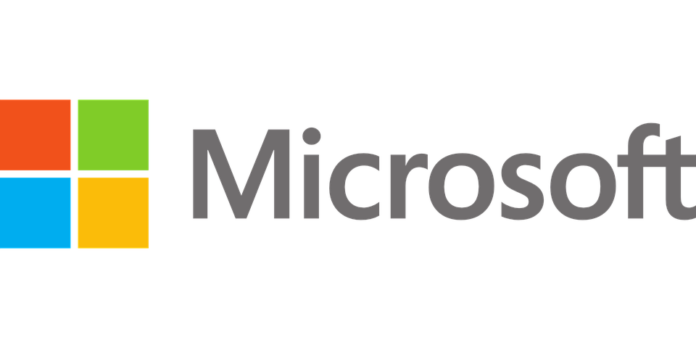Lahore (Muhammad Yasir) “Our world has changed dramatically over the last couple of months and in an effort to keep the wheels turning, companies across the world are switching to remote work … and Microsoft is no different”. This statement was issued by Microsoft today while sharing guidelines to keep devices safe from cyberattacks. Earlier this month, the company asked tens of thousands of its employees from around the globe to work from home. “A decision not made lightly as we all try to navigate the challenges of juggling the demands of home life with work hours”, the statement added.
Protecting your data, privacy and networks is another challenge that we are constantly engaged with. Microsoft analyses 6.5 trillion signals a day in order to identify emerging threats and protect users. However, according to the Konrad Adenauer Stiftung’s Cybersecurity report from July 2019, we all are at risk when it comes to cybersecurity.
With more of us going online via our home networks to work, do online banking, grocery shopping or even catch up with family members at a distance, cyber criminals will be looking for weaknesses to exploit. While we’re always on the lookout for these threats to your security, we still need your help to stay on top of our game.
In recent months, we’ve all had to rethink everyday hygiene like washing our hands and cleaning the surfaces we touch. Working securely from home should be no different. Much like how governments are asking us to make small changes while they consider the bigger ones, we want you to do the same when it comes to cybersecurity at home while we keep you protected.
A good place to start when it comes to cybersecurity hygiene is with email. “91 percent of cyberattacks start with email. To help protect you, we’ve created a multi-layered defence system that includes machine learning, detonation, and signal-sharing to quickly find and shut down email attacks. If any of these mechanisms detect a malicious email, URL, or attachment, the message is blocked from your inbox before it’s opened by our secure and isolated machines. It’s then analysed to give our developers additional insights and train machine learning models. This information is then shared with other services such as Advanced Threat Protection (ATP)”.
For us to provide you with this kind of protection, we also need your help to identify malicious emails. There are a few things that you can look out for when it comes to recognising a possible email cyberattack. One of the first tell-tale signs is a general greeting like “Good day” or addressing you by the incorrect name. This is then often followed by bad spelling and grammar. However, some scammers might have superb email etiquette and will trip you up elsewhere with suspicious links. To double check this, hover your mouse over the link – don’t click. A white or yellow box will pop up with the actual link and you can see if it corresponds with the link mentioned in the mail.
Avoid opening attachments from people you don’t know or you weren’t expecting to hear from. If you know the sender, but are still unsure, contact them directly to see if they meant to send you a file. Scammers will often instil a feeling of panic by setting a short timeframe for when you have to respond, with some sort of penalty. Finally, check to see if the sender’s name, signature and URL are the same. If an email has any of these red flags, send it to your spam folder and mark it as ‘phishing’. Email habits like these will go a long way to protecting you while you work from home.
One of the easiest ways you can help us keep your devices safe is to update the device software regularly. System updates are important for maintaining your device’s software to ensure it continues to run efficiently and helps keep you protected. During the update process, we’ll install the latest security patches to the operating system and other programmes to strengthen your device against cyberattacks.
Antivirus updates are also critical to making sure your device has the latest protection when it comes to virus and malware attacks. All devices running Windows 10 will have Windows Defender Antivirus built in which offers ongoing protection. It also works with third party antivirus software if you or your company has chosen to install a different programme. However, no matter which antivirus software you have, you will need to update this on a regular basis. The easiest way to do that is to set up automatic updates to download when you’re taking a break or at the end of a work day.
Do you find yourself forgetting your passwords and as a result using the same password for everything? Now is the time to go passwordless so you never again have to remember a long 16-character set of random digits, symbols and letters. Save yourself the hassle and switch to Microsoft’s range of passwordless technologies. Windows Hello uses facial recognition or your fingerprint, while the Microsoft Authenticator app uses your phone to login. If you’re looking for another layer of security, you can enable two-step verification on your devices and Microsoft account. Each time you sign in, you’ll receive a security code on your email, phone or through the authenticator app that you’ll then need plug in to gain access.
Protect your data with regular backups. If by chance a virus does slip through and corrupts your data, a recent backup can be a real lifesaver. At the very least, try to save files that you can’t afford to lose, such as documents, pictures, financial information, favourite links, contacts, and important emails. If you’re concerned about space, Microsoft’s online cloud storage OneDrive is a great way to keep your files safe and accessible from anywhere in the world.
Much like how we have changed our hand washing routine, are sneezing into the crook of our elbows and keeping a safe distance from others to prevent risk, the same applies to cybersecurity. These small changes to your online habits keep our cybersecurity experts informed so that they can help prevent attacks on your devices and you can continue to work safely from home.






